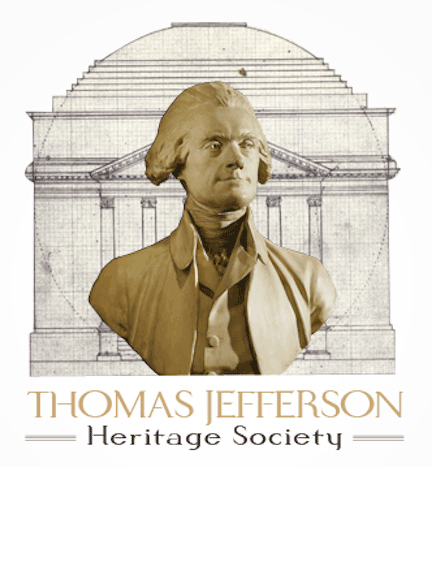Which Jefferson Was the Father?
Eliot Marshall
Science Magazine Vol 283, Issue 5399, 153-155 , 8 January 1999
The claim that Thomas Jefferson fathered at least one child by his slave Sally Hemings got a big boost in credibility last November when scientists published some stunning new data. A U.S. pathologist and a group of prominent European molecular biologists announced in Nature that they had found DNA sequences in the Y chromosome of the Jefferson family that matched DNA from the Hemings family. The finding set off a flood of news reports declaring that the third U.S. president had, as rumored, fathered an illegitimate child by Sally Hemings. But now the authors of the report say the evidence for that is less than conclusive.
In responding to letters in this week's issue of Nature, lead author Eugene Foster--a retired pathologist in Charlottesville, Virginia-- and co-authors make it clear that the data establish only that Thomas Jefferson was one of several candidates for the paternity of Eston Hemings, Sally's fifth child. However, they argue that, because Jefferson was Hemings's owner and lived with her at the Monticello plantation outside Charlottesville, "the simplest explanation" is that he was indeed the father.
Meanwhile, the Jefferson data have taken on a political spin. Reed Irvine, director of the conservative organization Accuracy in Media, based in Washington, D.C., claims that the news media purposefully distorted the results of Foster's study. In his current newsletter, Irvine says the news was released with "impeccable timing" to give comfort to President Bill Clinton on the eve of the U.S. national elections last November. Irvine thinks that journalists used the report to suggest that Jefferson "also had a problem with sex," thereby minimizing Clinton's affair with Monica Lewinsky.
Foster describes the conspiracy theory as "ridiculous," but he and his colleagues decided, he says, that they needed to respond publicly to several other points made by critics. One of these is Herbert Barger of Fort Washington, Maryland, a genealogist and husband of a Jefferson family descendant. He helped locate living members of the Jefferson family and persuaded them to donate blood to the DNA study. Not only did the authors neglect to mention his help, Barger says, they completely ignored a plausible theory he advanced.
Barger argues that the most likely father of Eston Hemings is not Thomas Jefferson, who was 65 at the time Eston was conceived, but Jefferson's brother Randolph, 12 years his junior, who lived 20 miles away. Other candidates, Barger suggests, are Randolph's sons, all of whom lived near Monticello, visited from time to time, and had the same Y chromosome as their father and uncle. Barger notes that one unsubstantiated account mentions that Randolph's son, Isham, spent his adolescence at Monticello, and that one contemporary recalled that Randolph liked to party in the slave quarters at night.
Foster agrees that he should have credited Barger, who was "fantastic" and "of immense help to me" in recruiting Jefferson family members to the study. His written comment now sets the record straight. Foster also acknowledges that Barger wrote a memo about a year ago suggesting that Randolph or Isham Jefferson might have been the father of Eston Hemings. Foster says he didn't credit Barger because Nature doesn't permit acknowledgments in the correspondence section, where his report appeared.
Asked why he failed to mention Randolph and Isham Jefferson in the initial article, Foster says it was because they weren't suspects. For years, members of the Jefferson family had claimed that sons of Thomas Jefferson's sister--Peter or Samuel Carr, who lived at Monticello--were the most likely to have fathered Hemings's children. The DNA study was intended chiefly to settle that question, Foster says: "The Carr connection was what [our article was] about." Besides, Y chromosome data cannot be used to identify individual paternity within the Jefferson clan. That's a job for historians, Foster says.
But that's not how it sounded in the headlines on the initial Nature report and on an accompanying comment by geneticist Eric Lander of the Massachusetts Institute of Technology and historian Joseph Ellis of Mount Holyoke College in South Hadley, Massachusetts. The Foster article was titled: "Jefferson fathered slave's last child," and the comment included a heading that said: "Now, DNA analysis confirms that Jefferson was indeed the father of at least one of Hemings' children."
Foster agrees that the headlines were "misleading" because they suggested that the data were conclusive. He attributes this "unfortunate" slipup to the haste with which his article and the LanderEllis essay went to press. They were hurried into print, he says, to beat the popular media, which had learned about their results and were poised to publish. "All of [the confusion over headlines] probably would have gotten straightened out if there had not been this frantic rush to beat the leaks," Foster says. Nature staffer Rosalind Cotter agrees that "the whole thing really was rushed through."
For his part, Ellis says he did not discuss the evidence for or against Randolph and Isham, because "very little is known about them" and "they had never been suggested as candidates." He adds: "It is scientifically plausible" that Randolph or Isham Jefferson was the father of Eston Hemings, "but it is a very, very remote possibility."
Historians will probably spend years trying to determine just how remote--or how plausible--that connection is. And the increasing emphasis on Thomas Jefferson's sex life rather than his political career, Ellis says, "just drives me nuts."
http://science.sciencemag.org/content/283/5399/153.1.full

